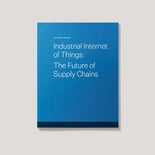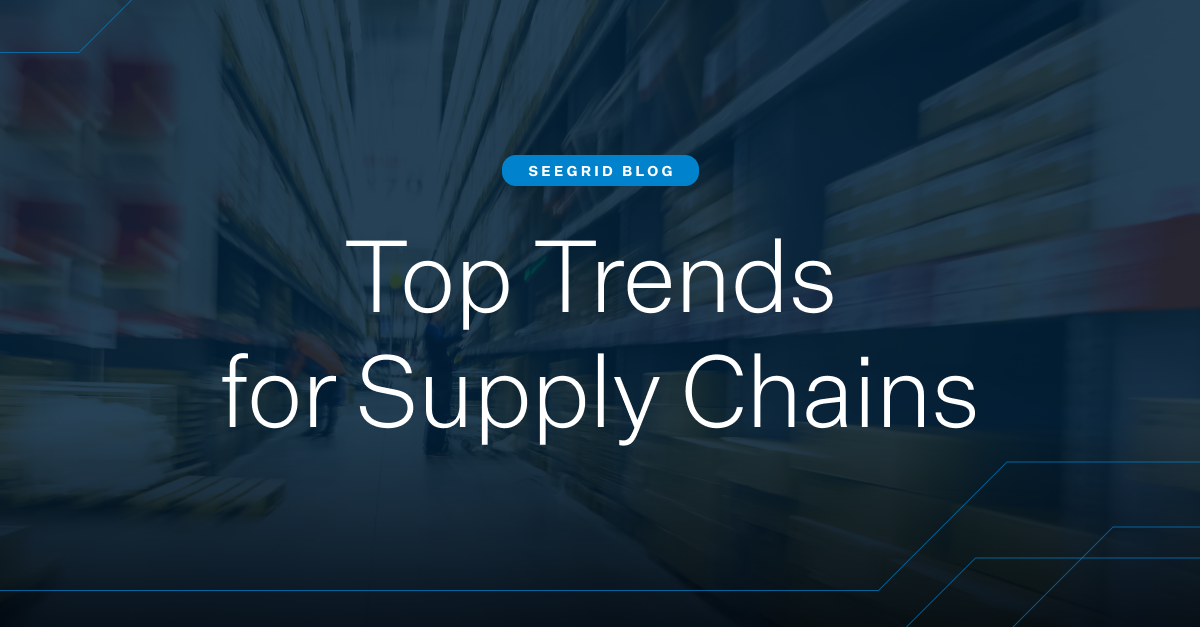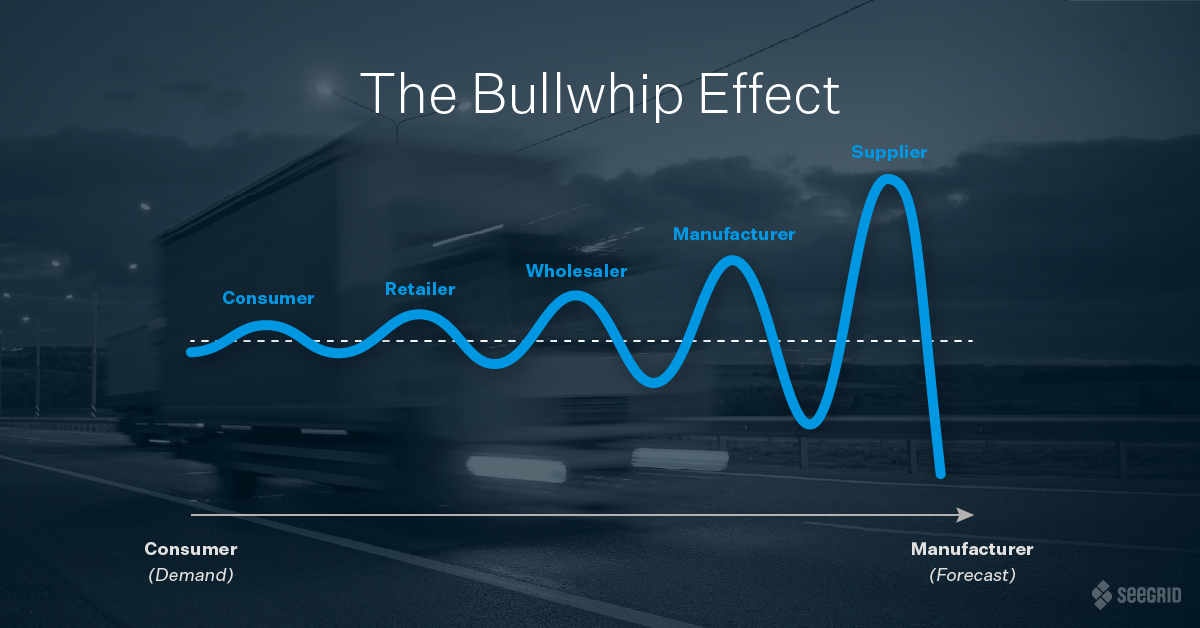Over the course of the past year, and continuing still today, it’s been made abundantly clear that supply chains need to be resilient in order to effectively and successfully support customers.
In 2020, many manufacturing, logistics, e-commerce, and warehousing facilities experienced extreme shifts, challenges, and disruptions as a result of the pandemic. Some industries came to a complete halt with facility shutdowns, whereas other industries experienced record-setting order volumes. In fact, high e-commerce sales continue to surge in 2021 with consumers continuing to shop online. Additionally, consumers are spending more on durable goods than ever before, boosting productivity goals for manufacturing plants.
Fortunately, the shocking days of empty grocery store shelves are behind us for now. However, supply chain demands will always continue evolving—whether the cause is a pandemic, new product offerings, company growth, shifts in consumer behavior, or various other factors. Change is the one thing we can always count on, no matter the cause.
The pandemic served as an eye-opening event for many companies to adjust their approaches and business plans. The key to success is being able to quickly and effectively navigate through changes going forward. With a keen focus on creating resiliency, here are the top trends in 2021 for supply chains.
1. Flexible Automation Solutions
Supply chains are complex. When a disruption occurs, a domino effect can ripple down through processes, exposing subsequent workflows to risks that could significantly delay or even stop production. The faster a company can adjust to changes, the faster they can reduce risk, absorb shock, and create new opportunities. There will always be evolving variables at play, which is why companies need to focus on becoming more resilient through flexible material handling automation solutions.
Automation and technology have quickly become the essential building blocks for creating a solid supply chain foundation. In fact, a recent report estimates that the automated guided vehicle (AGV) and autonomous mobile robot (AMR) market will grow around 35% over the next 5 years.
However, it is important to understand that not all material handling automation solutions provide the ability to adapt at a moment’s notice. Many AGVs navigate by following fixed, established paths that are defined by infrastructure within a facility. These traditional automated vehicles rely on physical sensors or landmarks, including tape, reflectors, wires, or magnets. AGVs reliably follow paths; however, if workflows need to adjust to meet new or changing demands, the infrastructure would need to be rebuilt or reconfigured. This can lead to production downtime and additional costs.
This is why flexible automation is crucial. For example, Seegrid Palion AMRs navigate using entirely on-board technology. Since Palion AMRs don’t rely on physical landmarks or infrastructure to navigate, changes can be made quickly and easily by facility personnel without sacrificing downtime to rebuild within the facility. The mobile robots can easily be assigned to a new route, a different shift, or a different facility altogether.
Automating material flow is a continuous, ongoing process that should evolve as your company grows. Your goals today will look different from your goals in the future. Supply chains are seeking automation solutions that allow for this flexibility to add agility and achieve success in both the short and long term.
2. End-to-End Automation Integration
Within the material handling industry, supply chains are now increasingly interested in complete end-to-end automation solutions to safely and reliably handle materials across entire facilities spanning inbound to outbound workflows.
Automation as a whole has become widely accepted and viewed as a necessity to remain competitive. Material automation solutions are proven to increase productivity, add agility, create safer working environments, reduce labor and operating costs, and facilitate continuous improvement, which is why companies are now interested in integrating mobile robots into more processes across entire enterprises.
Seegrid takes a holistic approach to automation—pairing industry-leading AMRs that can automate a wide range of workflow applications with enterprise software solutions and best-in-class services and support. To ensure a successful automation project, Seegrid provides dedicated experts who create tailored use-case designs that maximize the value and capabilities of the AMRs.
This team collaborates directly with customers to fully understand facility layouts, processes, and other key factors. The information gathered is used to help identify meaningful customer goals, build a business case, develop automation roadmaps that deliver a strong ROI, and prove success in day-to-day operations as well as long-term initiatives. This team also identifies opportunities to integrate processes, where multiple processes are automated and flow into one another for maximum efficiency.
3. Layering Data onto Automation Solutions
Data visibility has become a key focus for supply chains, and we expect it to continue playing a very important role in continuous improvement efforts in the future. With visibility into an operation, companies can better communicate status, drive automation adoption, and boost productivity with up-to-the-minute information. Facilities become empowered to confidently optimize workflows by tracking important metrics, identifying what is working well, and highlighting areas where improvements can be made.
Actionable analytics are a key component to an efficient automation project. Realizing the full potential of automation technologies requires a holistic, data-driven understanding of material flow, where workers and technology can work together effectively.
By monitoring the health and reliability of an AGV or AMR fleet, a facility can proactively avoid downtime with full insight into any wait times or bottlenecks. Having a full understanding of an AMR fleet and robotic solutions enables objective decision making based on metrics and data history.
As an example, take the recent e-commerce boom. Order volumes are tracking at record level highs, and consumers are expecting nearly immediate deliveries with every online transaction. Distribution, warehousing, and logistics centers require real-time tracking to ensure shipments are getting processed as quickly and efficiently as possible.
Seegrid understands the important role data plays, which led to the introduction of the Seegrid Fleet Central enterprise software platform. This platform includes Fleet Geek™ analytics software and Supervisor fleet management software. This powerful platform helps customers ensure their automation project is effective to fast-track success.
With automation data solutions, even more job opportunities are created for human workers. Companies can free up human capital from manual, repetitive, and dangerous tasks through automation, allowing human workers to take on more value-add, engaging roles that require decision making and a human’s perspective, including analysis of fleet performance data.
Preparing for Tomorrow
Supply chain complexities continue to evolve. Focus on resiliency to avoid potential risks. Strengthen the links of your supply chain to ensure success today and into the future through a flexible, end-to-end automation solution that empowers confident decision making through data visibility.

|
READ MORE Discover how supply chains are increasingly turning to automation technology and actionable analytics to achieve goals. |







